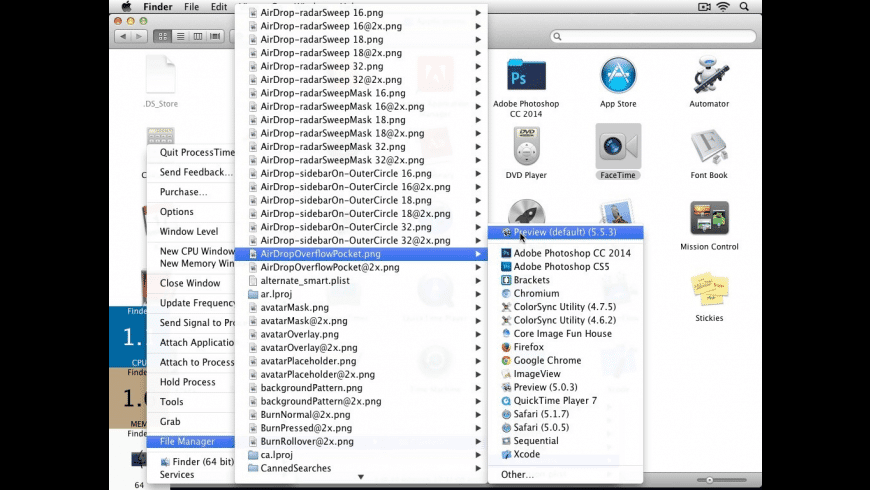


ProjectTimer 3.4.0.0. The use of color for each project will give a fast indication of which timer is running in the taskbar notification area (tray icon). This way you can quickly, but without interrupting your work, see if the timer for the project you’re working on is running. A countdown clock to count the time left to a date of your choice. To create your own countdown, for your own date, with your own look and feel, follow the link at the bottom of this page.
As you've noticed already, millis() returns how many milliseconds elapsed since program started:
http://processing.org/reference/millis_.html
To make a custom timer outta it, we just need to store apart current millis() in a variable when it starts.
Then, millis() - startTimer returns how many milliseconds elapsed since timer had started rather than program! *-:)
thank you :)
ok.I was thinking something like that.but.actually where should I place the startTimer var? This is the hierarchy of my code:
the function 'end' (of every level) change a variable that allows the game to move to the next level. My idea was to put the timer function at the beginning of every level (before starting any part of it).
I tried to put the startTimer variable in every place but cannot get it working.I tried to put it: inside the timer function, at the beginning of every level like this:
I tried to put it in the draw, before every level but still nothing.actually I guess it is because processing call everything 60 fps and then keep refreshing the value of startTimer with millis().
I'm a bit confused at this point :/
Thanks
P.
Variables can be classified as field or local:
Of course there are other categories too, like primitive/object & static/non-static.
But we'll leave those for another occasion! :D
Livepix looney tunes photo print studio. So, if we want startTimer to survive w/ its stored value & be accessed everywhere, it gotta be declared as a field instead!
Just place its declaration at the top of the sketch, before setup() block preferably! Save data naruto ultimate ninja impact.
hi, thanks.I know about the global/local variables.but my point is.ok, I've already declared startTimer at the beginning, before setup, as global.but then, where am I supposed to update it? https://hereeload585.weebly.com/itrash-3-4-2-download-free.html.
thnak you
P.
A basic idea is to have a constant to define how many milliseconds to w8.
Then check whether the diff. of current millis() - startTime > WAIT_CONSTANT;
If so, update startTimer w/ current millis() again! :D
ok.it's becoming quite difficult for me :D But how do I know what should be the correct value for WAIT_TIME?If I do this I see that the timer will restart every 3.5 second.but this is not what I need.or (more probably) I missed something.
Ok, from the beginning, I need a countdown timer. a function. I pass a value to the function (10,5..) and that's the number of seconds where the countdown will begin. I need to call this function in different places inside the game (and I can't know at what time I'll have to call the function because every level of the game may take more or less time to finish).
thanks for your patience :)
For such flexible schedules, creating a custom AlarmTimer is needed.
Nonetheless, Java comes w/ its own Timer class. And I've found a usage example of it below:
http://javarevisited.blogspot.com/2013/02/what-is-timer-and-timertask-in-java-example-tutorial.html
And Java's reference too:
http://docs.oracle.com/javase/7/docs/api/java/util/Timer.html
And here's what I've come up with:
First of all, thank you for your huge help.I think I understood (more or less) your code. A question: in the if statement.what does
& 0xF
mean? I would like to print out the countdown seconds (5,4,3,2,1), but now is too fast.
thanks
P.
B/c by default draw() is invoked @ 60 FPS, I've had to skip some print('.');. @-)
So, I decided to only print('.'); once in 16 draw() calls!
System variable frameCount keeps how many times draw() was called back.
Then, frameCount & 0xF (0xF means 15) masks out all bits past least significant 4.
It's a bitwise operation and demands binary knowledge to figure out how it works though! :(
A non-bitwise format is: frameCount % 16 0. :-'
Now, if you prefer 1 second countdown instead, that'd be frameCount % 60 0. (*)
well.I knew &&.actually never used & :D
last thing.I only need it to execute once. I'm trying to modify the value of hasFinished but I'm doing a mess.how can I make it execute only one time?
thanks
P.
Actually, it only executes once already! 8-X
What happens is that as soon theifblock within draw() realizes that hasFinished becametrue,
it re-invokes createScheduleTimer(), which in turn, re-schedule() the Timer w/ another TimerTask! :-B
It's just a simple demo on how Timer class works! You gotta implement that knowledge for your own custom needs!
Take notice that you can place anything you wanna happen after the wait time had passed into the run() block.
Yes exactly, I wanted to remove the hasFinished variable as I don't wan the timer to start again and again.now I set it to false and it's ok but I wanted to clear it up as I wont need it :)
anyway thank you it's what I needed! (at the beginning I thought it was easier :D)
P.
You can get rid of that boolean completely! You just need to specify what you wanna happen once the time delay has passed!
well.I am so bad I can't delete it without having a non workling code :-' . btw this is what I ended up with, and it's exactly what I needed.thank you very much GoToLoop! :)
Here is the link of good example of usage of Java Timer:->Timer
